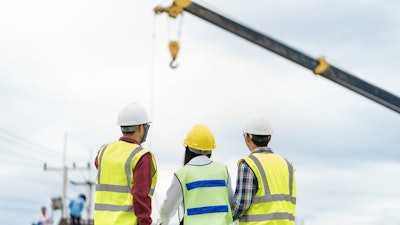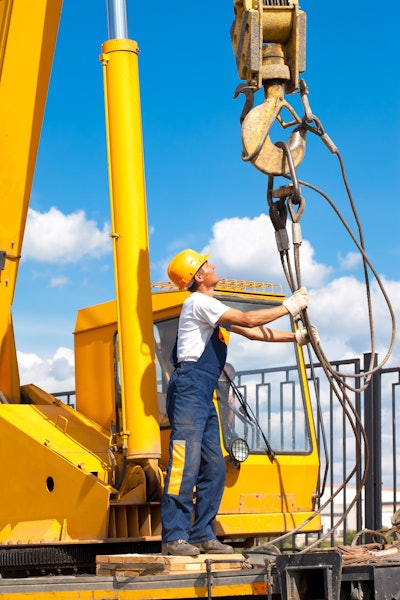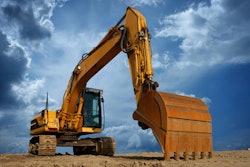
The Center for Construction Research and Training (CPWR) hosted a virtual Struck-By Webinar series, aiming to provide the audience with tangible tips on how to effectively prevent accidents on the construction site.
During the webinar series, conducted in coordination with the National Stand-Down to Prevent Struck-By Incidents, CPWR went live with its Avoiding Struck-By Incidents Under the Hook. The webinar episode was hosted by Michael Mills, CSP, from Liberty Mutual Insurance and included the participation of three panelists, Tom Gordon, International Union of Operating Engineers Local 14-14B; Jim Wiethorn, International Crane & Construction Safety Solutions, LLC.; and Mike Parnell, Industrial Training International.
The webinar covered the responsibilities of a lift director, and the awareness needed in the lift zone. The three panelists discussed certain issues that are currently prevalent in the field, statistics about past accidents, and proven best practices for lift safety.
The first panelist to speak was Tom Gordon and he spoke directly about the different roles and responsibilities of employees on the jobsite. Some of the roles included, general contractor, lift director, LHE operator, rigger and signal person.
He specified that each job has a specific set of responsibilities that can lead to the success, or failure of a lift.
In detail, Gordon reflected on the high importance of a lift director’s wide range of responsibilities — which starts before the lift even begins.
Some of the responsibilities include:
- Stopping the crane if there are any unsafe conditions
- Ensuring the lift area has been inspected and prepped to support
- Barricading off the swing radius and work area
- Ensuring traffic controls are implemented for workers and the general public
- Appointing a signal person who meets the requirements of the job
- Engaging in the site a day before and during the lift
- Making sure the load is rigged and balanced
- Informing the operator about load weights and procedures
As aforementioned, the lift director’s responsibilities start before the lift begins, including designating the lift as a ‘standard lift plan’ or a ‘critical lift plan.’ Some lifts are more difficult compared to others. Some aspects that need to be weighed include potential hazards, complexity of the lift, rigging capacity and performance, and site requirements.
If a lift is deemed a critical lift, additional planning must occur including a written plan of action. This extra step is to provide methods to prevent possible injuries and/or mistakes.
The webinar continued with Speaker Jim D. Wiethorn, who has analyzed over 1,200 crane accidents during his career. One startling statistic stood out: Crane lifts that do not have a pre-lift meeting are 355 times more likely to have an accident.
Following the statistics, Mike Parnell, Senior Consultant, ITI – Field Services, outlined the critical steps that must be taken to avoid struck-by accidents in the field.
The steps included: ©Fotolia RAW – stock.adobe.com
©Fotolia RAW – stock.adobe.com
- Pre-lift meeting
- Confirming capacity in cranes and rigging, and the tagline
- Checking the hoist line, boom point and rigging over center of gravity
- Making sure no unessential personnel are on site — and approved employers are in the correct position
- Placing tag-liner, signaler and rigger in non-risk zone
To listen to the whole webinar, watch Cranes & Lifting — Avoiding Struck by Incidents Under the Hook, hosted by CPWR.
Information provided by the Center for Construction Research and Training during Struck-By Webinar series and written by Chantal Zimmermann.




















